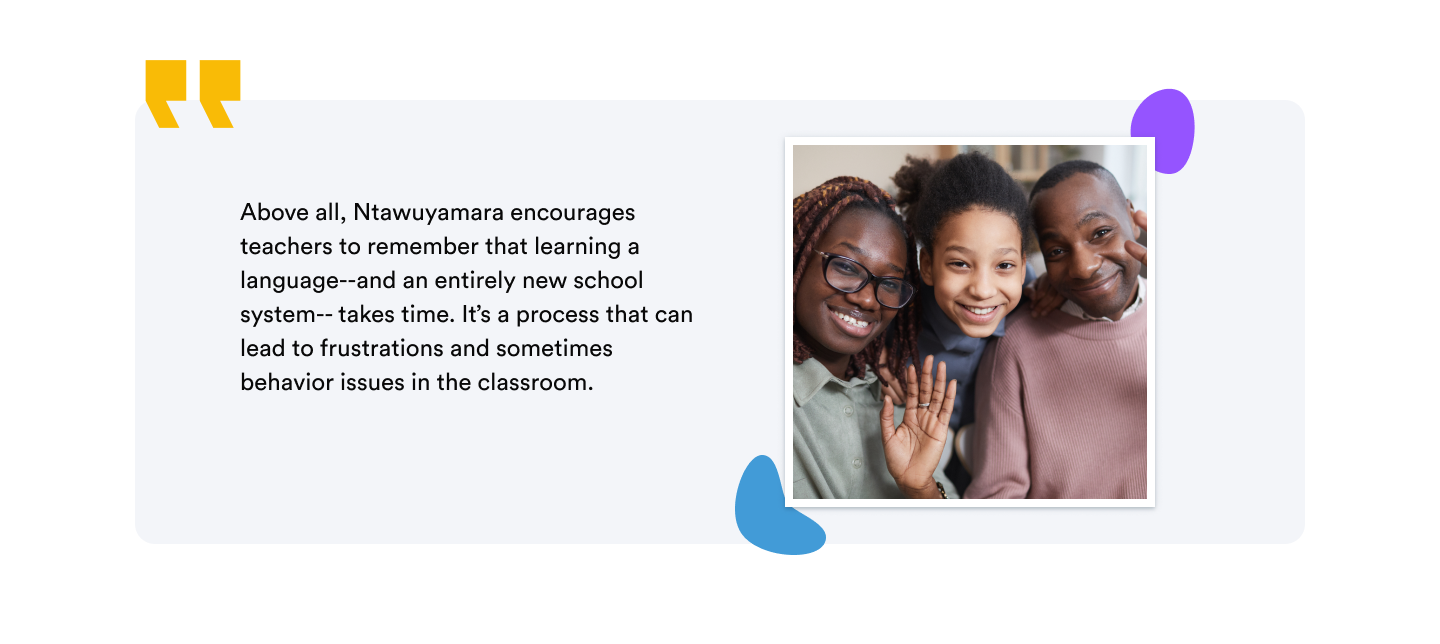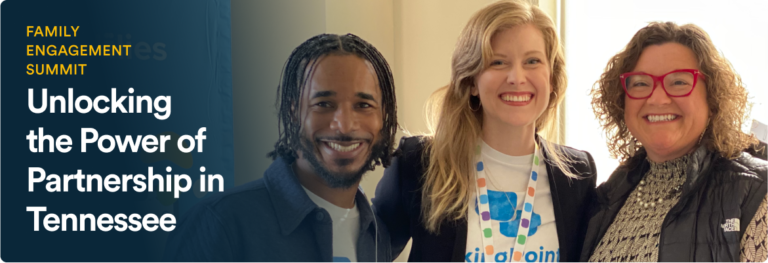At TalkingPoints, we know that building relationships across lines of difference is some of the most critical and rewarding work that educators do. From learning about your students’ rich cultural traditions to helping families navigate homework across language barriers, your efforts make it possible to have meaningful and joyful school-to-home connections. Your work also helps families access the great education their child deserves.
But authentic engagement between home and school can be challenging too. That’s why we’re here with a new blog series called Building Perspectives. Each post in the series offers insights and tips from educators on how to build relationships with families across cultural differences—and how to build the capacities of both teachers and families to support students and each other.
At Jefferson Elementary in Boise, Idaho, it’s not uncommon for Amy Collinge and Godoidefroid Ntawuyamara to welcome students from Congo, Burundi, Rwanda, Tanzania, Uganda, Sudan, and Somalia into their classroom.

Collinge served for two years as an English as a New Language Teacher at Jefferson where she worked closely with Ntawuyamara, a paraprofessional who provides English Language (EL) support to students struggling academically. This year she followed her students up to teach at South Junior High, where she uses what she learned with Ntawuyamara to continue to build and strengthen relationships with students and families.

Ntawuyamara, who hails from Congo, also helps the Jefferson school community by interpreting for families who speak Swahili, French, Kinyarwanda and several other regional languages.
Ntawuyamara’s own experiences have helped him empathize and build strong bonds with many of the families he supports. Armed conflict in Congo forced him to flee the country after he finished his bachelor’s degree. He spent years in a refugee camp in Malawi, where he started teaching.
“He’s a consistent and trusted part of our school community,” says Collinge. “He helps open doors for kids and families, starting on the day they enroll.”
Together, Ntawuyamara and Collinge have plenty of advice to offer their fellow educators on how to open those doors–and how to engage families and students from Africa during the school year in a meaningful way.
Start with a supportive enrollment process
“Everything starts when families come to our main office at school and express the wish to enroll their child,” says Ntawuyamara. If translation support is needed, staff arrange for district-provided interpreters or, if possible, Ntawuyamara.
At enrollment, staff use the opportunity to learn more about the family and student, including their age, country of origin, primary and secondary languages, and completed schooling, as well as any other critical information.
“A child may have lived in Congo but been brought up in Tanzania in a refugee camp, and so their registration may just say Tanzania,” says Ntawuyamara.
“That’s why staff need to look into the background of the families and think about what they might need in terms of support,” he adds.

Jefferson staff start by answering any questions that families have and providing information about the U.S. education system. Families are also given a campus tour and introduced to their student’s teachers and support staff, including counselors and psychologists. Lastly, staff make families aware of available resources in the community, including library-based reading programs and local sporting clubs.
“We also have families complete a form if they need a computer, and then we give it to a community organization that gets in touch with them and provides the device free of charge,” says Ntawuyamara.
Build relationships face to face
“There’s nothing that beats meeting face to face with our families,” says Collinge. In-person meetings can be especially pivotal for families who need help but aren’t sure how to ask for it within the school system.
Parent-teacher conferences and back to school night are major opportunities for this kind of critical engagement at Jefferson. They also take a lot of planning.
“We have to bring in many more translators for these events,” says Collinge, who adds that scheduling conferences in the 20+ languages represented at the school can be especially difficult and should be done well in advance.
Jefferson staff now offer a family conference option, which allows for parents of multiple students to meet with all their childrens’ teachers in a single visit. Staff also use TalkingPoints for scheduling support.
“Using TalkingPoints dramatically increased parent attendance at conferences. The app just made it so much easier to communicate the right place and time for the meeting,” Collinge adds.
“Using TalkingPoints dramatically increased parent attendance at conferences. The app just made it so much easier to communicate the right place and time for the meeting.”
Collinge also uses TalkingPoints to schedule individual meetings for students who may need extra support—with Ntawuyamara’s help. Collinge and Ntawuyamara regularly use TalkingPoints to share positive news with their families as well.
“We’ll let a family know how well their student did in reading and writing that day, or that their student went to band class and played an instrument they’d never seen before, which can be a really big step,” she adds.
Address needs and gaps in understanding
Ntawuyamara often sees a “big gap in understanding between families who had kids born in America and those who did not” when it comes to the school system. His goal is to help alleviate any misunderstandings or fears a parent might have when it comes to U.S. schools.
Some of the misunderstandings he encounters have to do with behavior management.
“Some parents use different types of discipline at home and don’t agree with the way we do things at school,” Ntawuyamara says. He makes sure to explain the purpose of positive behavior strategies and the way the school uses them to encourage better habits.

Ntawuyamara also communicates between staff and families about any needs a child might have when it comes to clothing and hygiene.
“In Africa the weather is so different than it is in Boise,” he says, adding that “if the students don’t have the right shoes for winter weather, our school will give them the shoes if needed.”
Ntawuyamara helps address other cultural differences that may complicate communication between students, families and teachers.
“In U.S. classrooms people talk to each other face to face, but that may not be the same for a female student coming from Somalia,” he adds. “I have to explain this to the teachers and let them know it may take some time for everyone to adjust.”

Above all, Ntawuyamara encourages teachers to remember that learning a language–and an entirely new school system– takes time. It’s a process that can lead to frustrations and sometimes behavior issues in the classroom.
“But once you see past these things you can see them for who they are. They’re bright kids,” he says.
If you’ve enjoyed reading this post of our Building Perspectives blog series and would like to comment or suggest a topic to add to the series, please reach out to us at hello@talkingpts.org or on any of our social channels. Don’t forget to follow us on Facebook, Instagram and Twitter for regular TalkingPoints updates and family engagement content.
Want to learn more?
TalkingPoints’ easy-to-use platform, interactive features, and precise translation in over 100 languages can provide game-changing solutions for bridging the home-school gap for teachers, school districts, and families. Learn more about our services here, and contact us at hello@talkingpts.org to learn more about how TalkingPoints can increase family engagement, improve home-school connections, enhance relationships between teachers and families, and support academic and social-emotional growth for every student.
For updates and news on what we’re up to, follow us on Facebook, Instagram, and Twitter. Check out our blog for free resources on remote learning and family engagement and see how other teachers are using TalkingPoints to make a difference in their students’ learning.



